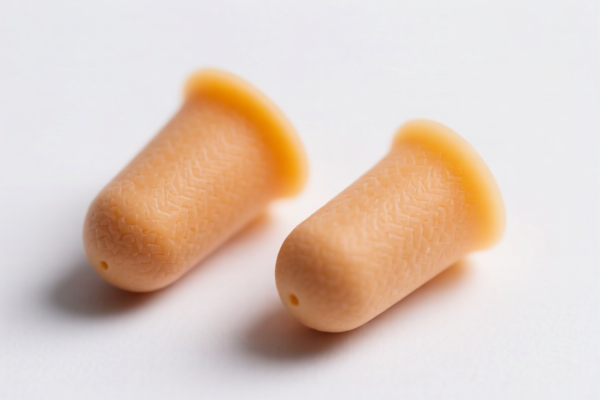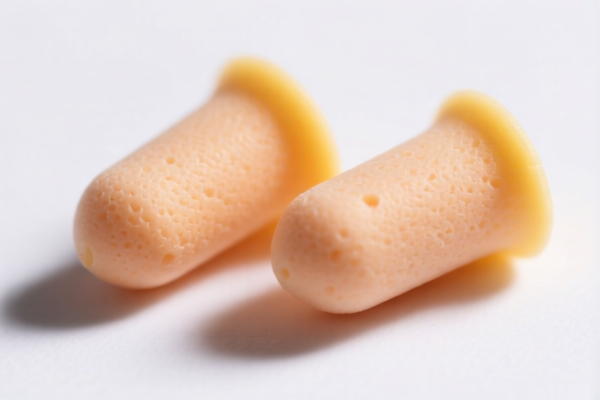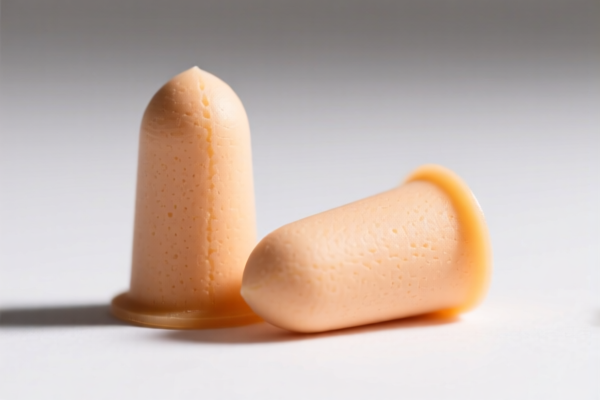| HS Code | Official Doc | Tariff Rate | Origin | Destination | Effective Date |
|---|---|---|---|---|---|
| 8518302000 | Doc | 30.0% | CN | US | 2025-05-12 |
| 9018904000 | Doc | 30.0% | CN | US | 2025-05-12 |
| 9021904080 | Doc | 30.0% | CN | US | 2025-05-12 |
| 9021904040 | Doc | 30.0% | CN | US | 2025-05-12 |
| 6506910060 | Doc | 55.0% | CN | US | 2025-05-12 |




Ear Plugs
Ear plugs are small devices designed to reduce the level of sound entering the ear canal. They are commonly used for hearing protection, noise cancellation, or to improve comfort in noisy environments.
Material
Ear plugs are constructed from a variety of materials, each offering different levels of noise reduction, comfort, and reusability:
- Foam: Typically made of open-cell polyurethane foam, these are disposable, inexpensive, and conform to the shape of the ear canal for a customized fit.
- Silicone: Reusable, washable, and often custom-molded for a precise seal. They offer varying levels of noise reduction depending on the density and design.
- Wax: Soft and moldable, providing a comfortable, but less consistent, seal. Often used for swimming to prevent water entering the ear.
- Flanged Silicone/Rubber: Reusable with a pre-shaped, multi-flange design. These are available in various sizes and offer good noise reduction.
- Custom-Molded: Created from impressions of the ear canal, these provide the most accurate fit and highest level of noise reduction. Typically made from silicone or acrylic.
Purpose & Function
The primary function of ear plugs is to attenuate sound. They achieve this by blocking the ear canal, reducing the amount of sound energy that reaches the eardrum. Different ear plugs offer varying levels of Noise Reduction Rating (NRR), measured in decibels (dB). A higher NRR indicates greater noise reduction.
- Hearing Protection: Preventing damage to hearing from loud noises (e.g., concerts, construction sites, shooting ranges).
- Noise Cancellation: Reducing distracting background noise for improved concentration (e.g., studying, sleeping, travel).
- Equalization of Pressure: Used during air travel or diving to equalize pressure in the ears, preventing discomfort or pain.
- Water Protection: Preventing water from entering the ear canal during swimming or showering.
Usage Scenarios
- Industrial Settings: Construction, manufacturing, airports, and other loud workplaces.
- Recreational Activities: Concerts, shooting sports, motorsports, swimming, and sleeping.
- Travel: Air travel to reduce cabin noise and equalize pressure.
- Sleep: Blocking out snoring, traffic noise, or other disturbances.
- Studying/Concentration: Minimizing distractions in noisy environments.
Common Types
- Disposable Foam Ear Plugs: Single-use, rolled and inserted into the ear canal.
- Pre-Molded Ear Plugs: Reusable, available in various sizes and shapes. Often with a tapered or flanged design.
- Custom-Molded Ear Plugs: Made specifically for the user's ears, offering the best fit and noise reduction.
- Flanged Ear Plugs: Reusable with multiple flanges to create a seal in the ear canal.
- Musician's Ear Plugs: Designed to reduce noise levels evenly across the frequency spectrum, preserving sound quality while protecting hearing.
- Swim Ear Plugs: Designed to keep water out of the ear canal, often made of silicone or wax.
- Electronic Ear Plugs: Utilize electronic components to actively reduce noise levels or amplify specific sounds.
Ear plugs are devices inserted into the ear canal to reduce noise levels or protect against water ingress. They are commonly used in industrial settings for hearing protection, during sleep to block out disturbances, or during water activities like swimming.
The following HS codes from the provided reference material may be relevant:
- 9020009000: Other breathing appliances and gas masks, excluding protective masks having neither mechanical parts nor replaceable filters; parts and accessories thereof: Other. This code encompasses a broad category of breathing and protective equipment. While not specifically mentioning ear plugs, it could apply if the ear plugs are marketed or designed as protective devices against harmful substances or environments. The tax rate is: Basic tariff: 2.5%, Additional tariff: 0.0%, Additional tariff after 2025.4.2: 30.0%, Total tariff: 32.5%.
According to the provided reference material, the HS code options related to 'ear plugs' are limited, with only the following 1 found.
Regarding HS code 9020009000, please note that this is a broad category. It is important to confirm the specific function and materials of the ear plugs to ensure accurate classification.
Customer Reviews
No reviews yet.